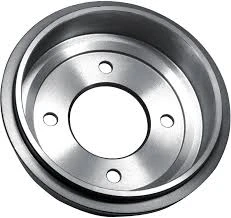Modern Cars with Drum Brakes
Modern Cars with Drum Brakes A Blend of Tradition and Innovation
In an era where modern automotive technology is rapidly advancing, the incorporation of drum brakes in new vehicles might seem outdated at first glance. However, drum brakes are still present in several modern cars, providing a blend of tradition and innovation that deserves attention. This article explores the reasons behind the continued use of drum brakes, their benefits, and the cars that still feature this time-tested braking system.
Understanding Drum Brakes
Drum brakes operate using a cylindrical drum that houses a set of brake shoes. When the brake pedal is pressed, hydraulic pressure causes the shoes to expand against the inner surface of the drum, generating friction that slows down the vehicle. This design has been in use for over a century and remains relevant today, especially in specific applications.
Why Do Some Modern Cars Use Drum Brakes?
1. Cost-Effectiveness One of the primary reasons many manufacturers still utilize drum brakes is their lower production cost compared to disc brakes. For budget-friendly models or economy cars, drum brakes offer an affordable alternative that helps keep the overall vehicle price down.
2. Sufficient for Lightweight Vehicles In smaller, lighter vehicles that do not demand high-performance braking systems, drum brakes can provide adequate stopping power. They are often employed in the rear axles of compact cars, where the demand for braking performance is lower.
modern cars with drum brakes

3. Handling and Stability Drum brakes can contribute to better handling, particularly in certain driving conditions. Their design allows for a uniform distribution of braking force, which can enhance vehicle stability and control during deceleration.
4. Protection from the Elements The enclosed design of drum brakes offers superior protection from dust, dirt, and moisture. This feature is particularly beneficial in regions with harsh weather conditions, as it helps maintain braking performance and longevity.
Modern Applications of Drum Brakes
While drum brakes are less common on the front wheels of modern vehicles—where disc brakes dominate due to their superior performance—they can still be found in the rear of various cars. Budget-friendly sedans, compact SUVs, and certain hybrids may incorporate drum brakes in their design. Examples include vehicles like the Toyota Yaris and various models of small pickups, where weight and cost considerations play a significant role in engineering decisions.
Conclusion
In conclusion, while disc brakes have become the standard in modern automobile design, drum brakes still hold a relevant place in the automotive landscape. Their cost-effectiveness, adequate performance for lighter vehicles, and durability in adverse conditions ensure their continued presence in the market. As manufacturers seek to balance performance, safety, and affordability, the drum brake remains a testament to the enduring legacy of automotive engineering—a perfect blend of tradition and innovation for many modern cars. Whether as a reliable option for economical vehicles or a practical choice for specific applications, drum brakes continue to drive the history of automotive braking systems forward.
-
The Power and Reliability of Brake DrumsNewsAug.27,2025
-
The High-Quality Truck Brake DrumsNewsAug.27,2025
-
Quality Brake Drums for Reliable PerformanceNewsAug.27,2025
-
Get the Quality Semi Trailer Brake Drums for Your FleetNewsAug.27,2025
-
Everything You Need to Know About Brake DrumsNewsAug.27,2025
-
Enhance Your Vehicle's Performance with Reliable Brake DrumsNewsAug.27,2025
-
Truck Drum Brake Spring Replacement ProcedureNewsAug.22,2025


